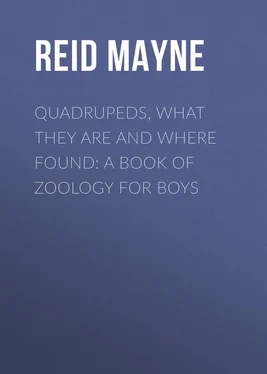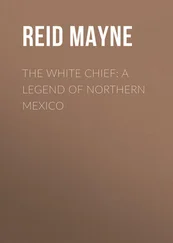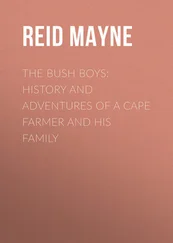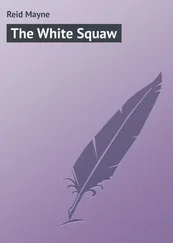Mayne Reid - Quadrupeds, What They Are and Where Found - A Book of Zoology for Boys
Здесь есть возможность читать онлайн «Mayne Reid - Quadrupeds, What They Are and Where Found - A Book of Zoology for Boys» — ознакомительный отрывок электронной книги совершенно бесплатно, а после прочтения отрывка купить полную версию. В некоторых случаях можно слушать аудио, скачать через торрент в формате fb2 и присутствует краткое содержание. Жанр: literature_19, foreign_antique, foreign_prose, на английском языке. Описание произведения, (предисловие) а так же отзывы посетителей доступны на портале библиотеки ЛибКат.
- Название:Quadrupeds, What They Are and Where Found: A Book of Zoology for Boys
- Автор:
- Жанр:
- Год:неизвестен
- ISBN:нет данных
- Рейтинг книги:5 / 5. Голосов: 1
-
Избранное:Добавить в избранное
- Отзывы:
-
Ваша оценка:
- 100
- 1
- 2
- 3
- 4
- 5
Quadrupeds, What They Are and Where Found: A Book of Zoology for Boys: краткое содержание, описание и аннотация
Предлагаем к чтению аннотацию, описание, краткое содержание или предисловие (зависит от того, что написал сам автор книги «Quadrupeds, What They Are and Where Found: A Book of Zoology for Boys»). Если вы не нашли необходимую информацию о книге — напишите в комментариях, мы постараемся отыскать её.
Quadrupeds, What They Are and Where Found: A Book of Zoology for Boys — читать онлайн ознакомительный отрывок
Ниже представлен текст книги, разбитый по страницам. Система сохранения места последней прочитанной страницы, позволяет с удобством читать онлайн бесплатно книгу «Quadrupeds, What They Are and Where Found: A Book of Zoology for Boys», без необходимости каждый раз заново искать на чём Вы остановились. Поставьте закладку, и сможете в любой момент перейти на страницу, на которой закончили чтение.
Интервал:
Закладка:
Should the bees’ nest prove to be on the ground, or under it, the ratel soon unearths the treasure with his strong claws, and takes possession of it, regardless of the stings of the bees, against which his thick skin defends him.
The Orison inhabits the forests of South America, from Guiana to Paraguay. It is quite as ferocious as any of the tribe; but its smaller size hinders it from attacking large animals, and its victims are birds, agoutis, and other small rodents – against all of which it wages a war of extermination. When surprised by the hunters and their dogs, it will battle furiously till life is extinct: all the while emitting a strong disagreeable smell, after the manner of the weasels and polecats. The Racoon , which we have grouped with the badgers, is both a North and South American animal; dwelling in dense forests, and making its lair in the hollow of a tree. This animal is a good tree-climber, and usually takes refuge among the higher branches when pursued. It is nocturnal in its habits, but in deep shady woods it may be seen prowling about in the daylight, in search of birds and their eggs, small rodents, fish, or frogs, all of which it eats indifferently. There are several distinct species.
The Coati is exclusively South American. This, unlike the racoon, sleeps at night, and prowls during the day. It is also an expert tree-climber, and has a peculiarity in this respect; viz., it descends a tree head foremost , which no other animal of its order can do. It is equally as fierce and carnivorous as any of the badgers; and its prey, as with the racoon , consists of birds, their eggs, and small quadrupeds. It feeds also upon insects; and will turn over the earth with its long proboscis-like snout. When drinking it laps like the dog. In eating, it uses its fore-paws to carry the food to its mouth, though not as squirrels and monkeys do. On the contrary, it first divides the flesh, or whatever it may be, into small morsels, and then raises these to its mouth by impaling them on its claws as on a fork!
It is not a solitary animal, but prefers the society of its companions, and usually goes about in troops or gangs. Its lair, like the racoon, is the hollow of a tree.
The Panda of the East Indies is an animal of very similar habits. It is found chiefly along the banks of streams that descend from the mountains; and subsists upon small quadrupeds and birds – which it is able to follow to the tops of the tallest trees. Its name of Qua, or Oua, or Wha, is derived from the cry which it utters, and repeats very often; and which is well represented by any of the syllables above written.
Chapter Five.
Weasels, Otters and Civets
Fortunate it is that the quadrupeds composing this group are all animals of small dimensions. Were they equal in size to lions and tigers, the human race would be in danger of total extirpation: for it is well-known that weasels are the most ferocious and bloodthirsty creatures upon the earth. None of them, however, much exceed the size of the ordinary cat: unless we include the gluttons and wolverenes among the weasels, as naturalists sometimes do, notwithstanding that these animals differ altogether from them.
The civets , it is true, are not usually classed with the weasels, but form a group of themselves; however, they are much more nearly related to weasels than the gluttons; and where, as in the present case, it is desirable to divide the mammalia into large groups, they will stand very well together. In truth, the civets are much nearer in resemblance to weasels than the otters are; and these two last are generally classed together – the otters being neither more nor less than water weasels.
We shall first consider the true Weasels : that is, the Weasels, Stoats, Ferrets, Polecats, and Martens.
The habits of most of the species are well-known; and all resemble each other in the exceeding ferocity of their disposition. It will only be necessary to say a word about their geographical distribution, and to speak of a few of the more noted kinds.
In Great Britain, five species are natives: the Pine and Beech Martens, the Stoat, the Common Weasel (which is the type of the family), and the Polecat. The Ferret is not indigenous to the country, but has been introduced from Africa, and is trained, as is well-known, for the pursuit of the rabbit – which it can follow into the very innermost recesses of its burrow. The English species of weasels are also common to other countries of Europe and Asia.
In the high northern latitudes of the Old World, we find a very celebrated species – celebrated for a long time on account of its valuable fur – the Sable. The sable is a true marten: a tree-climber, and one of the most sanguinary of weasels. An account of its habits, and of the mode of hunting it, forms one of the most interesting chapters in natural history.
An allied species inhabits the Hudson’s Bay territory, known as the American sable, and another, belonging to the Japanese islands, is called the Japan sable.
The Ermine is a species equally famous; and for a like reason – the value of its beautiful white fur, so long an article of commerce. The ermine is neither more nor less than a stoat in winter dress; but there are several varieties of it – some that turn to brown in summer, while another kind retains its snow-white covering throughout all the year. The ermine is common to Europe, Asia, and North America.
The Pekan is a larger species, belonging to North America, and semi-aquatic in its habits; while the Vison, or Mink, is a large black weasel that inhabits the borders of rivers in Canada and the United States, where it preys upon fish and aquatic reptiles.
In North America there is also a very large Pine marten, so called from its habit of dwelling in the pine forests – where it climbs the trees in pursuit of birds and squirrels. This is among the largest of the weasel tribe. In California, a new species has been described under the name of the Yellow-cheeked weasel, and in Mexico another, the Black – faced; so that North America has its full complement of these sanguinary quadrupeds. Nor is the southern division of that continent without its weasels, as there is one species or more in New Granada, one in Guiana, and two or three in Chili and Peru.
In India, there is the White-cheeked weasel, Hodgson’s and Horsefield’s weasels; and in Nepaul, the Nepaul weasel, and the Cathia. Further north in Asia, there is, in Siberia, the Vomela, the Chorok, and the Altai weasel of the Altai Mountains; and no doubt need exist that animals of the weasel tribe are to be found everywhere. Indeed, if we regard as weasels the various carnivorous quadrupeds of the glutton and badger family, which have been described elsewhere in these sketches – including the strange Teledu or Stinkard of Java, the Helietis of India and China, the Täira and Grison of Brazil, the Ratel or honey badger of Africa, the Zorille of the Cape, the Zorilla or Maikel of Patagonia, the Sand bear of India, and the numerous varieties of the celebrated Polecat, or Skunk, of North and South America – we may well say that there are weasels, or their representatives, in every hole and corner of the earth.
With regard to the Polecats of America, they form a sort of link between the weasels and civets; and although there was long supposed to be but one kind – as in the case of the opossum – it is now ascertained that there are several distinct species, with an endless list of varieties.
The Water Weasels , or Otters , are not so numerous either in species or individuals – though there are at least a dozen of them in all, and they are widely distributed over the world.
In Britain, there is but one – the Common or European otter; and in North America, a very similar species was supposed, until recently, to be the only one inhabiting that continent. The rivers of California, however, have presented us with a second, known as the Californian otter; and the singular Sea otter, whose beautiful fur is so prized under the name of Sea otter, is also an animal inhabiting the coasts of California – as it does most part of the western seaboard of the American continent.
Читать дальшеИнтервал:
Закладка:
Похожие книги на «Quadrupeds, What They Are and Where Found: A Book of Zoology for Boys»
Представляем Вашему вниманию похожие книги на «Quadrupeds, What They Are and Where Found: A Book of Zoology for Boys» списком для выбора. Мы отобрали схожую по названию и смыслу литературу в надежде предоставить читателям больше вариантов отыскать новые, интересные, ещё непрочитанные произведения.
Обсуждение, отзывы о книге «Quadrupeds, What They Are and Where Found: A Book of Zoology for Boys» и просто собственные мнения читателей. Оставьте ваши комментарии, напишите, что Вы думаете о произведении, его смысле или главных героях. Укажите что конкретно понравилось, а что нет, и почему Вы так считаете.












